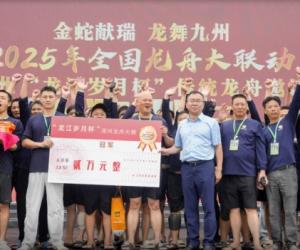The second most significant branch of the Tea-Horse
Road, surpassed only by the Yunnan-Markam route in importance, started at Ya’an in western Sichuan. Like southern Yunnan, western Sichuan has a long history of tea cultivation stretching back, according to Chinese records, as far as Han Dynasty times (206BC-220AD). According to the earliest known Chinese manual on pharmacology, the Shennong Bencao Jing (‘Shennong Classic Materia Medica’), tentatively dated to the 1st century BC, the first recorded tea plantation was established in 53BC by the legendary tea cultivator Wu Lizhen in Mingshan County, Ya’an Prefecture. Wu Lizhen is said to have planted ‘seven seeds of miraculous tea’ in his tea garden at Mengshan. During Tang Dynasty times, in 742 AD, Mengshan tea was designated part of the imperial tribute of the Ya’an region, a custom which continued down to the fall of the Qing Dynasty in 1911. Today Mengshan lies within Mount Mengdinshan Scenic Area, where Wu Lizhen’s tea garden is preserved – the tea trees are said to be replanted ‘every three to four hundred years’ – together with a tea museum. Armed Khampa Tibetans at Yanjing on the Tea-Horse Road between Deqin and Markam, 1910Certainly Ya’an has long been associated with excellence in production of tea, and since the variety of tea grown is long-leafed Pu’er, while Ya’an Prefecture is contiguous with Garze Tibetan Autonomous Prefecture to the west and Ngawa Tibetan and Qiang Autonomous Region to the north, it is hardly surprising that, over the centuries, Ya’an developed as a tea supplier to the Tibetan market to rival Xishuangbanna in southern Yunnan. As a consequence, a network of ‘Tea-Horse’ routes developed to the north and west of Ya’an, carrying tea by human portage or mule caravan up onto the high Tibet-Qinghai Plateau, leading ultimately either to Markam County (where it joined with the main Yunnan-Tibet Tea-Horse Road), or via the tea distribution centres Songpan, Garze and Yushu, to Gansu and Qinghai. If anything, the Sichuan-Tibet Tea Road was even more difficult than the longer route from Yunnan. Immediately to the west of Ya’an the route – now more-or-less synonymous with Highway 318 from Ya’an to Lhasa and the Nepalese frontier – rises sharply towards 3,437m Erlang Shan, a treacherous and difficult massif cutting Ya’an off from Luding and the Dadu River Valley. Today a twisting but wide paved road runs between Ya’an and Luding, and the notoriously difficult Erlang Shan Pass is effectively bypassed by a recently-constructed (2000-1) 4.2km long tunnel through the mountains – currently the highest road tunnel in China. Beyond Erlang Shan the road curves down to the Dadu River Gorge and the old caravan town of Luding, best known for its ancient, 104m single-span iron suspension bridge and for the key battle that was fought there on the ‘Long March’ in 1935, when the Red Army seized the bridge intact from the pro-KMT forces of Liu Wenhui. West of the Luding Bridge, the route climbs higher into the mountains – in this case the Daxue Shan or ‘Great Snow Mountains’ before reaching the old caravan centre of Kangding. Famous throughout China for a popular love-song inspired by the spectacular local scenery, Kangding is compressed into a narrow valley between steep mountainsides, and is dominated to the south by the awe-inspiring, permanently snow-clad massif of Gongga Shan (7,556m). As with Zhongdian on the southern branch of the old Tea-Horse Road, although well inside Sichuan Province, Kangding marks the beginning of the end of ‘China Proper’ and the start of the Tibetan world. Today the town is predominantly Han Chinese, but the atmosphere is palpably Tibetan, with Khampa tribesmen from eastern Tibetan trading, as they have for centuries past, in a market that – in addition to manufactured goods from the eastern provinces – still features yak meat, sheepskins, bales of wool, medicinal herbs and, above all, bricks of Pu’er tea from Ya’an, once sewn in yak-hide, today machine-pressed and branded in waterproof wrappings. Beyond Kangding, the former Tea-Horse Road – now more-or-less identical with Highway 318 – continues west across magnificent but difficult country, crossing the Yalong River at Yajiang and climbing still further towards the Qinghai-Tibet Plateau via the caravan town of Litang (celebrated in the ‘ode’ to the Tea-Horse Road for its tsampa or Tibetan-style roasted barley). Located on broad grass plains that are ideal for grazing, and surrounded by snow-capped peaks, Litang (4,680m) is very much a part of the old Tibetan province of Khampa, a region of yak-skin clad Tibetan riders and whitewashed stupas called chorten that mark passes and difficult sections of road. The northern part of Litang remains overwhelmingly Tibetan, and here too can be found Chöde Gompa, a Mahayana Buddhist lamasery built for the third Dalai Lama (1578-88) containing an image of Sakyamuni Buddha said to have been brought from Lhasa by caravan. Tibetan Autonomous Region, Counties and Prefectures West of Litang, just 30km from the frontier between Sichuan and the Tibetan Autonomous Region, Batang is another venerable old caravan town that is celebrated in the ‘Tea-Horse’ ode for the sweetness of its bod ja or butter tea. The atmosphere is mixed Han-Tibetan, with the former more numerous in the newer part of town. Surrounded by snowy peaks, Batang is known for its many teashops, offering the last chance for a refreshing cup of Pu’er or Tibetan butter tea before crossing the Yangzi River into Tibet Proper. After Batang, the road descends into the narrow valley of the upper Jinsha Jiang, headwater of the Yangzi, before climbing, once again, through the precipitous Ningjing Shan to Markam County, where it meets up with the old Tea-Horse Road from Yunnan, a vital trade crossroads from antiquity now marked by the junction of Route 318 (the Sichuan-Tibet Highway) and Route 214 (the Yunnan-Tibet Highway). Beyond Markam, to the west, the joint Tea-Horse Road continues to Lhasa via a continuation of Highway 318.






